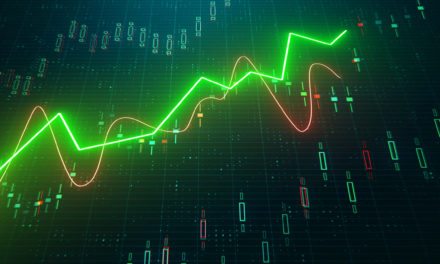
“Someone’s sitting in the shade today because someone planted a tree a long time ago.”
— Warren Buffett
A key lesson we can learn from Warren Buffett, is about how to think about a potential stock investment in the context of a long-term time horizon. Every investor in a stock has a choice: bite our fingernails over the short-term ups and downs that are inevitable with the stock market, or, zero in on stocks we are comfortable to simply buy and hold for the long haul — maybe even a twenty year holding period. Heck, investors can even choose to completely ignore the stock market’s short-run quotations and instead go into their initial investment planning to hold on for years and years regardless of the fluctuations in price that might occur next.
Today, we examine what would have happened over a twenty year holding period, had you decided back in 2004 to buy shares of Halliburton Company (NYSE: HAL) and simply hold through to today.
| Start date: | 04/05/2004 |
|
|||
| End date: | 04/02/2024 | ||||
| Start price/share: | $14.69 | ||||
| End price/share: | $39.91 | ||||
| Starting shares: | 680.74 | ||||
| Ending shares: | 908.71 | ||||
| Dividends reinvested/share: | $9.42 | ||||
| Total return: | 262.67% | ||||
| Average annual return: | 6.65% | ||||
| Starting investment: | $10,000.00 | ||||
| Ending investment: | $36,255.21 | ||||
As shown above, the twenty year investment result worked out well, with an annualized rate of return of 6.65%. This would have turned a $10K investment made 20 years ago into $36,255.21 today (as of 04/02/2024). On a total return basis, that’s a result of 262.67% (something to think about: how might HAL shares perform over the next 20 years?). [These numbers were computed with the Dividend Channel DRIP Returns Calculator.]
Dividends are always an important investment factor to consider, and Halliburton Company has paid $9.42/share in dividends to shareholders over the past 20 years we looked at above. Many an investor will only invest in stocks that pay dividends, so this component of total return is always an important consideration. Automated reinvestment of dividends into additional shares of stock can be a great way for an investor to compound their returns. The above calculations are done with the assuption that dividends received over time are reinvested (the calcuations use the closing price on ex-date).
Based upon the most recent annualized dividend rate of .68/share, we calculate that HAL has a current yield of approximately 1.70%. Another interesting datapoint we can examine is ‘yield on cost’ — in other words, we can express the current annualized dividend of .68 against the original $14.69/share purchase price. This works out to a yield on cost of 11.57%.
Here’s one more great investment quote before you go:
“If you don’t study any companies, you have the same success buying stocks as you do in a poker game if you bet without looking at your cards.” — Peter Lynch




